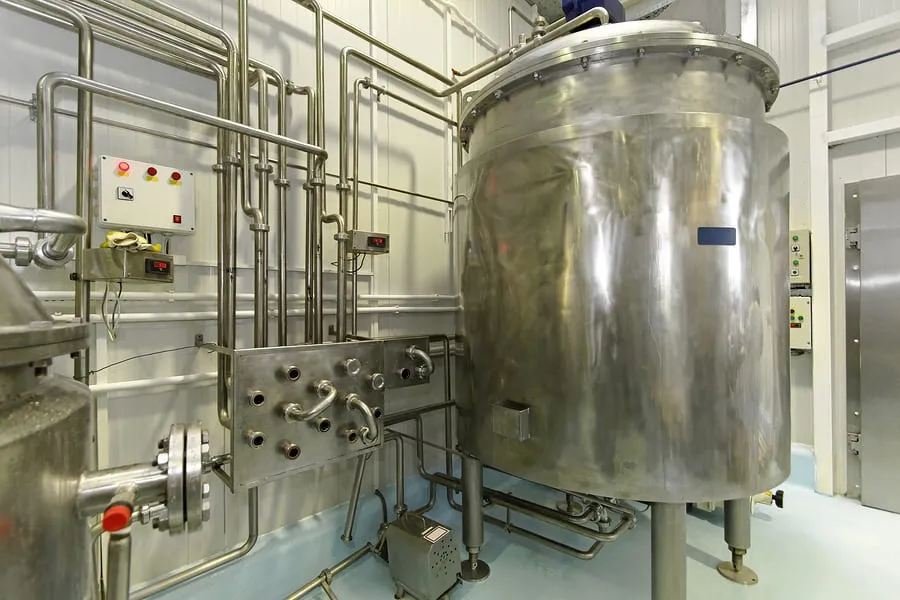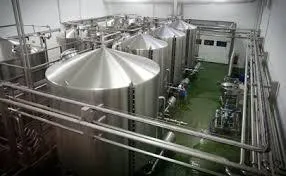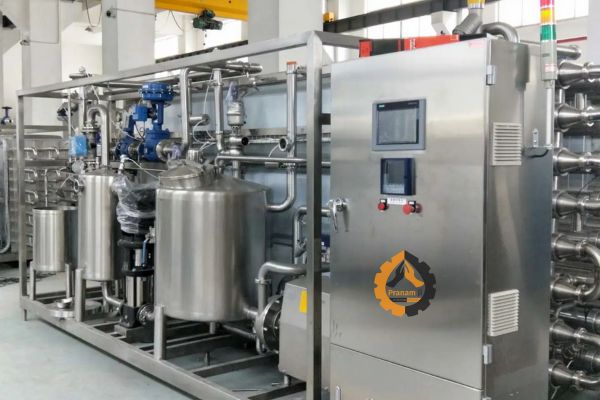

Steps in the Pasteurization Process:
- Preheating: Milk is first preheated to around 60°C (140°F) to prepare it for the main heating phase.
- Pasteurization: The milk is then rapidly heated to at least 72°C (161°F) for a minimum of 15 seconds in a process known as High-Temperature Short Time (HTST) pasteurization. This step effectively reduces the microbial load.
- Cooling: After pasteurization, the milk is quickly cooled to below 4°C (39°F) to prevent any remaining bacteria from multiplying.
- Packaging: Finally, the cooled milk is packaged in sterile containers to maintain its quality during storage.
This process not only extends the shelf life of milk but also enhances its safety for consumption. Companies like Pranam Ji Engineering Works specialize in providing equipment and solutions for efficient pasteurization, contributing to the dairy industry’s commitment to food safety and quality assurance.
What is Milk Pasteurization : Milk pasteurization is a heat treatment process designed to kill harmful bacteria and extend the shelf life of milk. This process is crucial for ensuring the safety and quality of milk products.
Pasteurization of Milk Procedure : The pasteurization of milk involves several steps. First, raw milk is collected and filtered to remove impurities. Next, it is heated to a specific temperature for a set period to eliminate pathogens. Finally, the milk is cooled rapidly to preserve its freshness.
Pasteurization Temperature of Milk : The typical pasteurization temperature of milk varies based on the method used. Commonly, milk is heated to at least 161°F (72°C) for 15 seconds in the high temperature short time pasteurization (HTST) method.
Pasteurized Milk Process : The pasteurized milk process ensures that the final product is safe for consumption. After pasteurization, the milk is packaged in sterile containers to prevent recontamination.
Pasteurization of Milk Machine : A milk pasteurization machine is specifically designed to automate the pasteurization process, providing consistent heating and cooling. These machines are essential for large-scale dairy operations, ensuring efficiency and quality control.
Pasteurization of Milk Process : The pasteurization of milk process is vital for public health. It not only destroys harmful microorganisms but also preserves the nutritional value and taste of milk.
By understanding the milk pasteurization temperature and the associated methods, consumers can appreciate the importance of this process in producing safe, high-quality milk products.
Product Categories
Quick Contact
Download PDF
for more information, Kindly Download our Brochure.
| Collection | Raw milk is collected and filtered to remove impurities |
| Heating | Milk is heated to a specific temperature (e.g., 161°F/72°C). |
| Duration | Maintained at the pasteurization temperature for a set time (e.g., 15 seconds). |
| Cooling | Rapidly cooled to preserve freshness and quality. |
| Packaging | Packaged in sterile containers to prevent recontamination. |
| Quality Control | Samples tested for safety and quality assurance. |
| Material Grade | SS 304 |
| Surface Treament | Powder Coated |


